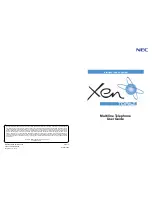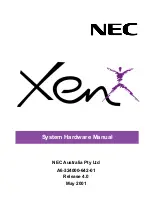
Usage Notes
Purpose
Network Protocol
SDP capabilities, such as codec
types, DTMF detection, and
comfort noise, are normally
configured on a global basis by a
Third-Party Call Control System or
a Media Gateway in operation.
Some SIP endpoints may allow
configuration of these parameters
on the endpoint itself.
SDP is the portion of the SIP
protocol that determines which
parameters are available during a
connection between two endpoints.
Conferences are established by
using only the SDP capabilities that
all endpoints in the conference
support.
Session Description Protocol (SDP)
Like other VoIP protocols, SIP is
designed to address the functions
of signaling and session
management within a packet
telephony network. Signaling
allows call information to be
carried across network boundaries.
Session management provides the
ability to control the attributes of
an end-to-end call.
SIP is the Internet Engineering
Task Force (IETF) standard for
multimedia conferencing over IP.
SIP is an ASCII-based
application-layer control protocol
(defined in RFC 3261) that can be
used to establish, maintain, and
terminate calls between two or
more endpoints.
Session Initiation Protocol (SIP)
Cisco IP Phones use SRTP for
media encryption.
SRTP is an extension of the
Real-Time Protocol (RTP)
Audio/Video Profile and ensures
the integrity of RTP and Real-Time
Control Protocol (RTCP) packets
providing authentication, integrity,
and encryption of media packets
between two endpoints.
Secure Real-Time Transfer protocol
(SRTP)
—
TCP is a connection-oriented
transport protocol.
Transmission Control Protocol
(TCP)
When security is implemented,
Cisco IP Phones use the TLS
protocol when securely registering
with the third-party call control
system.
TLS is a standard protocol for
securing and authenticating
communications.
Transport Layer Security (TLS)
TFTP requires a TFTP server in
your network, which can be
automatically identified from the
DHCP server.
TFTP allows you to transfer files
over the network.
On the Cisco IP Phone, TFTP
enables you to obtain a
configuration file specific to the
phone type.
Trivial File Transfer Protocol
(TFTP)
UDP is used only for RTP streams.
SIP uses UDP, TCP, and TLS.
UDP is a connectionless messaging
protocol for delivery of data
packets.
User Datagram Protocol (UDP)
Cisco IP Phone 6800 Series Multiplatform Phones Administration Guide
19
About the Cisco IP Phone
Network Protocols
















































